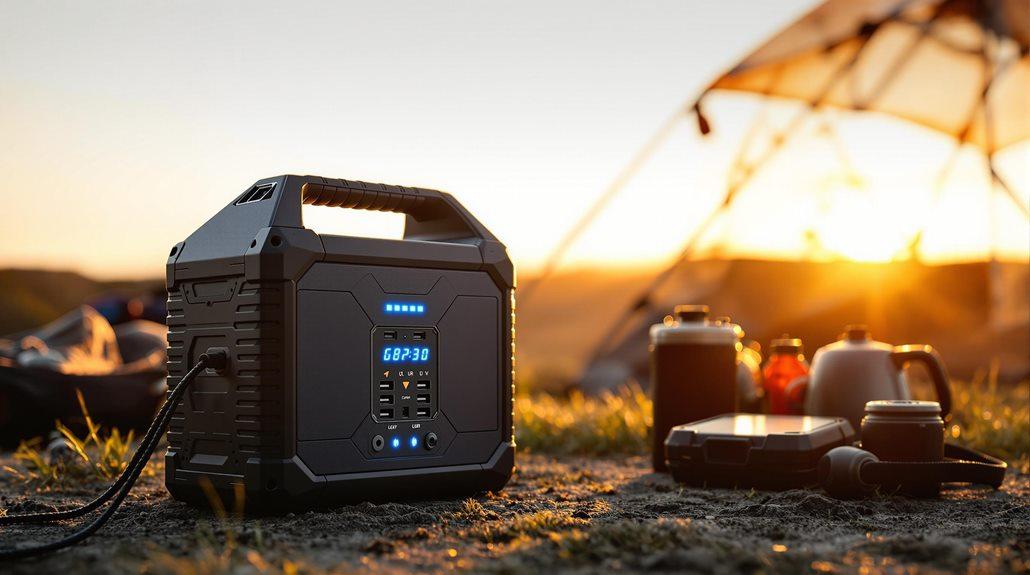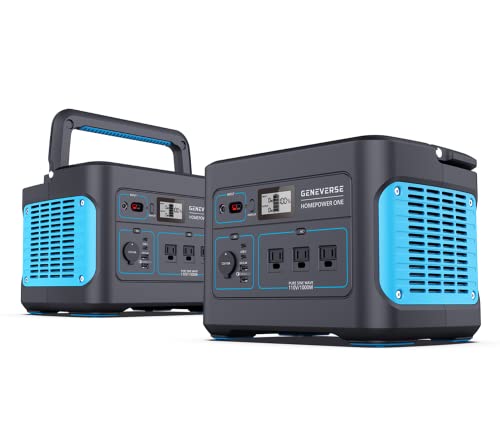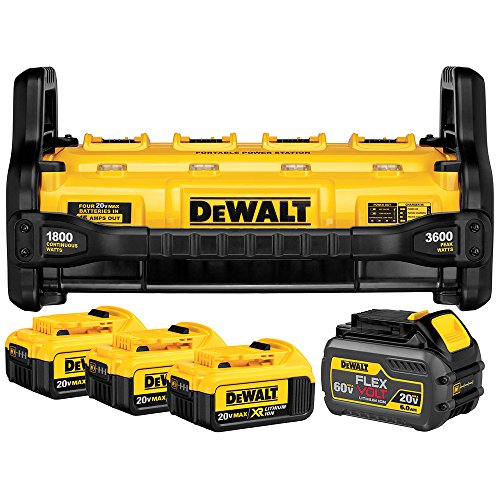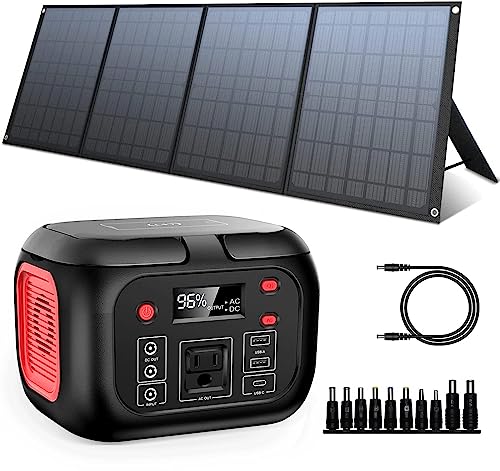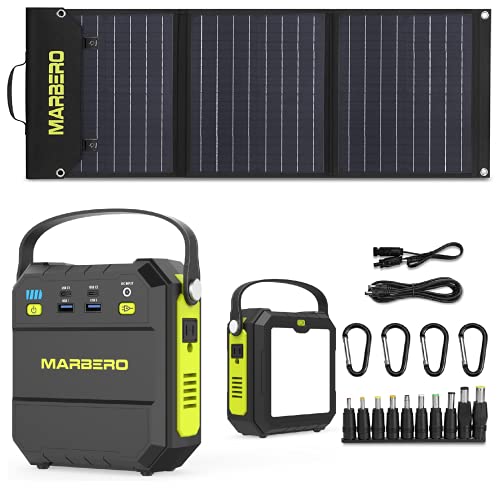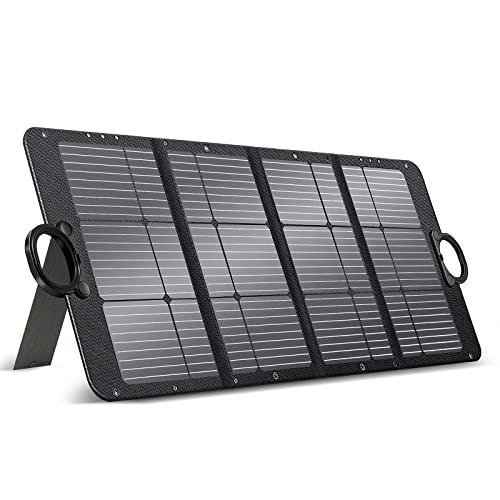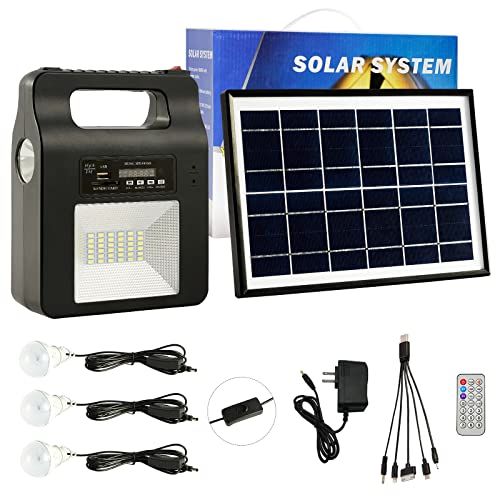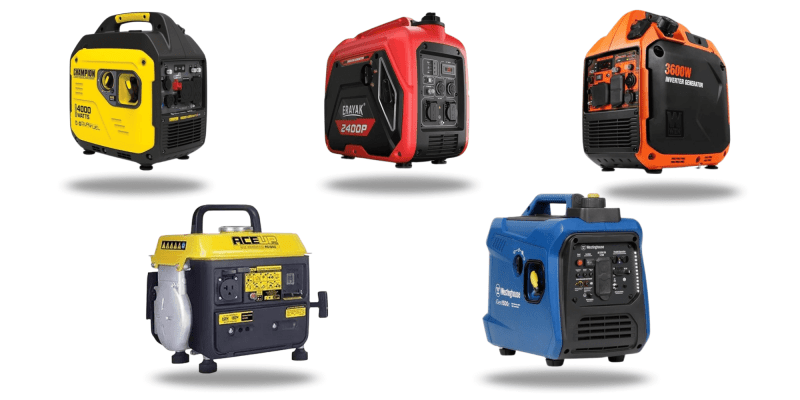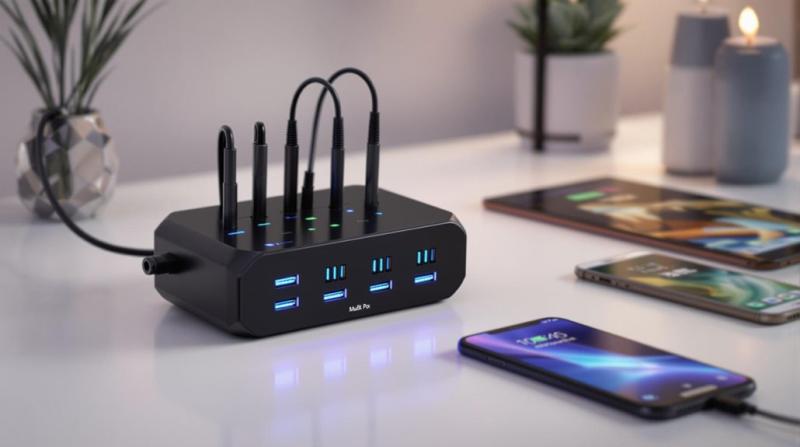Compact emergency power stations are a versatile solution for your outdoor power needs. You'll find models ranging from 300Wh units for basic device charging to 6,000Wh systems for all-encompassing backup power. These stations feature weatherproof construction with IP54 ratings, lightweight designs under 20 pounds, and multiple charging options including wall outlets, solar panels, and 12V vehicle connections. They're built with durable lithium-ion or LiFePO4 batteries that can handle 3,000-5,000 charge cycles and operate in temperatures from -4°F to 140°F. For peak outdoor use, choose a unit with at least 300Wh capacity and multiple ports. Understanding the full range of features will help you select the perfect power station for your adventures.
Key Takeaways
- 300-600Wh power stations provide ideal capacity for mobile device charging while remaining lightweight under 20 pounds for portability.
- IP54 weatherproofing and reinforced exteriors ensure durability against outdoor elements and rough terrain conditions.
- Multiple charging options including solar panels, wall outlets, and 12V vehicle connections offer flexibility during outdoor emergencies.
- Pure sine wave inverters deliver stable power output across temperatures from -4°F to 140°F for reliable outdoor performance.
- Simultaneous charging capabilities through multiple AC and USB ports support various devices during emergency situations.
Understanding Portable Power Station Categories
When you're shopping for a portable power station, understanding the different capacity categories is essential for making the right choice. Power stations range from compact 300Wh units designed for device charging to robust 6,000Wh systems capable of emergency backup for your entire home. Lithium-ion batteries offer superior energy density and can last through hundreds of charging cycles, making them ideal for portable power solutions.
You'll find power stations grouped into four main categories based on battery capacity and output wattage. Small units (300-600Wh) are perfect for charging small electronics and mobile devices, while midsize options (1,000-1,500Wh) offer more versatility for longer trips. Large units (2,000-3,600Wh) provide holistic power needs for extended outdoor adventures, and extra-large stations (4,000-6,000Wh) deliver serious emergency backup capability.
Your choice should align with your power needs and intended use. Consider the number of charging options available, including AC outlets, USB ports, and solar charging compatibility. Premium models often feature advanced battery chemistry like LiFePO4 and expandability options, while budget-friendly units still offer reliable portable power for basic requirements. Prices typically correspond to capacity, starting around $300 for basic models and reaching beyond $1,500 for high-capacity systems.
Power Output and Performance Analysis
Most portable power stations deliver impressive output capabilities ranging from 300W to 3,600W continuous power, with surge capacities often reaching double these ratings for demanding startup loads. When you're selecting a power station for emergency backup, you'll want to contemplate both the power output and battery capacity to verify it meets your needs. Popular models like the Goal Zero Yeti lineup offer versatile output options and extended runtimes for maximum flexibility. These units can typically sustain device charging for 3-12 hours, depending on your connected devices' total watts and the station's battery life.
You'll find that modern power stations offer reliable performance across various temperature conditions, thanks to advanced battery technology like lithium iron phosphate. They'll maintain stable voltage while powering multiple devices simultaneously, with some models supporting up to 13 different electronics at once. The charging efficiency you'll experience varies by model, but you can expect full recharges in just 1-2 hours through a wall outlet. If you're using solar panels, you'll need 3-7 hours for a complete charge, making these portable units practical for both home and outdoor use. When choosing your power station, contemplate both your immediate power needs and potential emergency scenarios to verify adequate capacity.
4.26 out of 5 stars2 Geneverse 1002Wh Portable Power Stations with 8 Outlets
Power up your adventures with the ultimate portable power solution from Geneverse
Product information
Product Review Score
Product links
Essential Features for Outdoor Use
Durability and portability stand as cornerstone features for any outdoor power station. When you're selecting a power station for emergency backup or outdoor adventures, you'll want to focus on models with a rugged design that includes water-resistant features and shock-absorbing materials. Look for units under 20 pounds with built-in handles or wheels to guarantee easy transportation across various terrains. Premium power stations like the EcoFlow Delta Pro offer advanced durability features and faster charging capabilities for demanding outdoor use.
Your power station should have a minimum battery capacity of 300Wh to effectively power essential devices during emergencies or extended outdoor stays. Multiple charging options are vital, so make certain your unit includes at least two AC outlets for larger devices, along with USB ports (both Type-A and Type-C) for smartphones and tablets. This versatility allows you to charge multiple devices simultaneously while off the grid.
Solar charging compatibility is another must-have feature for outdoor use, as it provides a reliable way to recharge your power station when traditional power sources aren't available. By connecting portable solar panels, you'll maintain a sustainable power supply during extended outdoor stays or emergency situations, ensuring your devices stay powered when you need them most.
Battery Life and Charging Options
Battery performance capabilities define the true value of any outdoor power station. Pure sine wave inverters offer peak performance for sensitive electronic devices, guaranteeing consistent and reliable power delivery. When you're selecting a portable power station for emergency backup or outdoor activities, you'll find most units offer between 300 and 1,500 watt-hours of capacity, which can sustain your essential devices for up to two days. The latest models featuring lithium iron phosphate technology deliver exceptional longevity, supporting 3,000 to 5,000 charge cycles throughout their lifetime.
Your charging options are diverse and practical, with wall outlets providing the fastest solution at 1-3 hours, while solar charging takes 4-8 hours depending on your panel's specifications. For added convenience, you can also charge through your vehicle's 12V outlet. Runtime varies based on your power needs, but a 1,000Wh power station can typically power a refrigerator for nearly a day or charge your smartphone dozens of times. Many modern units now offer expandable capacity through external batteries, allowing you to multiply your original storage capacity when needed. This flexibility guarantees you'll have sufficient power for extended outdoor stays or prolonged emergency situations.
$990.00
4.43 out of 5 starsDEWALT FLEXVOLT Power Station with Charger (4 Batteries)
The Ultimate Solution for Power Outages and Outdoor Adventures: DEWALT FLEXVOLT Portable Power Station with Charger and 4 Batteries
Product information
Product Review Score
Product links
Weatherproofing and Durability Standards
Reliable outdoor power stations stand up to nature's toughest challenges through thorough weatherproofing and durability features. When you're choosing a power station for outdoor use, look for units that meet or exceed the IP54 rating, which guarantees protection against dust and water splashes from any direction. Battery cycle longevity varies substantially between different types, so selecting the right one is pivotal for outdoor reliability.
The most rugged power stations feature reinforced construction using either aluminum or high-impact polycarbonate exteriors, allowing them to survive drops of up to 4 feet. You'll want to check for sealed electrical connections and rubberized port covers, which are essential for preventing moisture damage. The best models incorporate military-grade sealing techniques to keep your power station functioning in challenging conditions.
For superior weatherproofing, select models with LiFePO4 batteries, which offer excellent temperature resistance between -4°F and 140°F. Quality power stations also include internal conformal coating on circuit boards to prevent corrosion and resist humidity. Before trusting any model for your outdoor adventures, verify that it's undergone exhaustive durability testing, including vibration resistance, shock absorption, and exposure to UV radiation. These features guarantee your power station will remain reliable when you need it most.
Frequently Asked Questions
What Can a 200W Portable Power Station Run?
You can use a 200W portable power station as your camping charger, phone booster, and laptop lifeline for multiple charges. It'll serve as your camera companion, GPS navigator, and drone helper during adventures. You'll also find it perfect as a lantern lighter, speaker source, tablet trainer, and headlamp handler. The station can power your small electronics for several hours, keeping your devices running when you're away from traditional power sources.
What Is the Difference Between a Portable Generator and a Power Station?
Looking for reliable outdoor energy solutions? The main difference is that power stations use battery backup technology, while portable generators run on fuel. You'll find power stations are a silent generator option that's perfect for mobile charging and camping. They're a lightweight solution for electrical support, but offer less power than generators. Power stations are safe for indoor use and provide clean, compact electricity for your emergency supply needs.
What Is the Difference Between a Power Bank and a Portable Power Station?
While you'll use a power bank for mobile charging of small devices like phones, a portable power station offers much more battery backup capacity and electrical convenience. Power stations can run larger rechargeable devices through AC outlets, making them ideal for emergency electricity needs. Your power bank is a lightweight storage solution for travel, but a power station provides substantial portable energy options, though it's bigger and heavier.
How Long Can a Portable Power Station Run?
Your portable power station's runtime depends heavily on its energy storage capacity and how you use it. You'll typically get anywhere from 1 to 40 hours of backup power, depending on your device's power needs. For example, you can power a refrigerator for 10-40 hours, while high-wattage appliances will drain the battery life faster. The performance range varies by model, and you'll need to evaluate usage limits and recharge cycles for peak performance.
